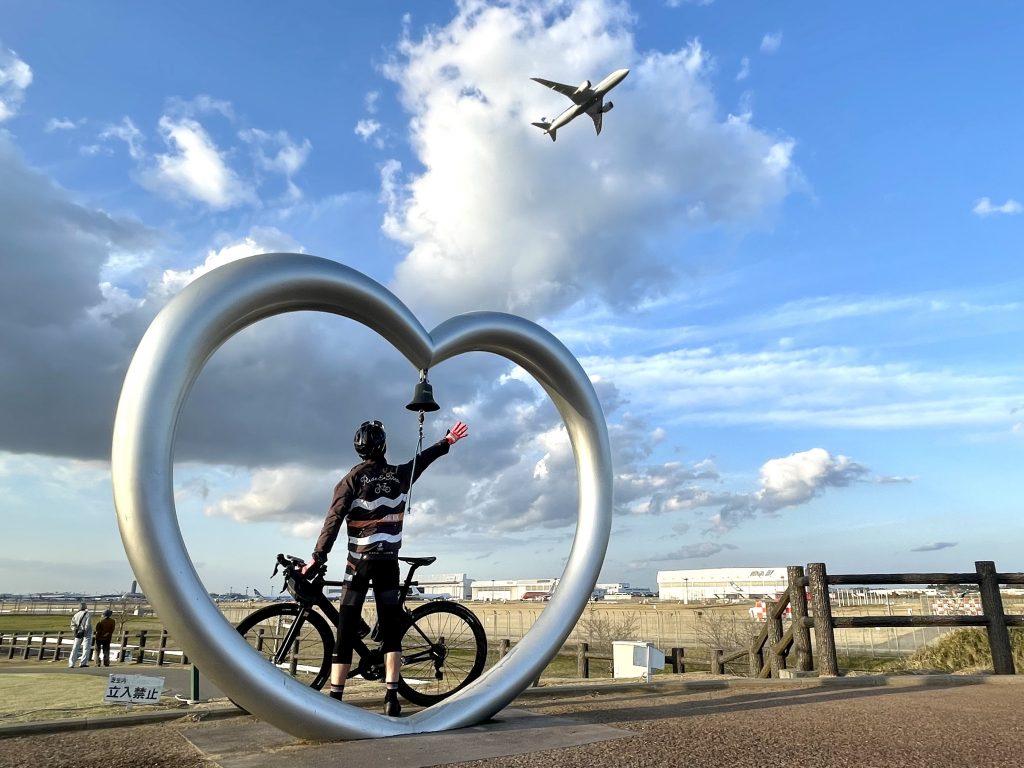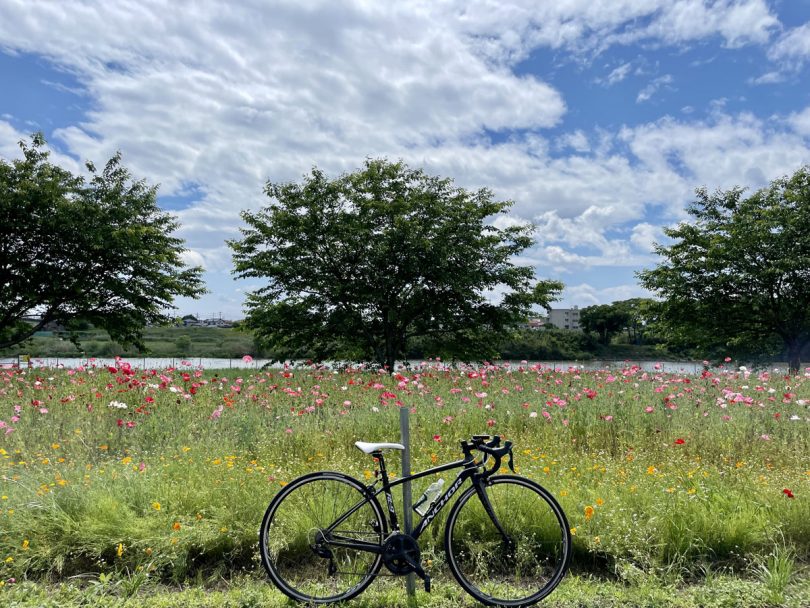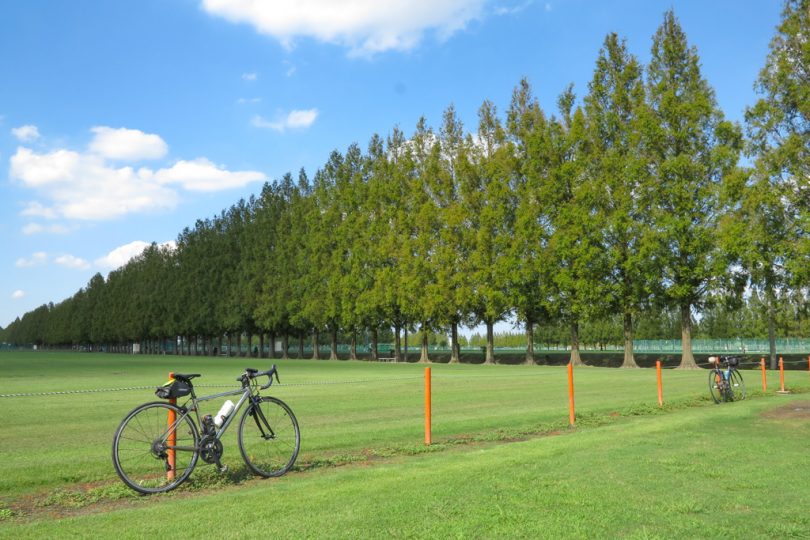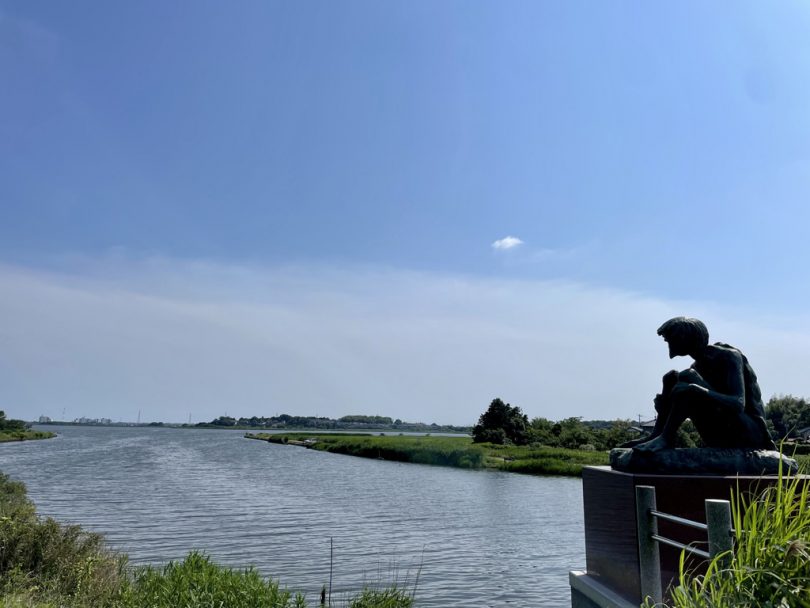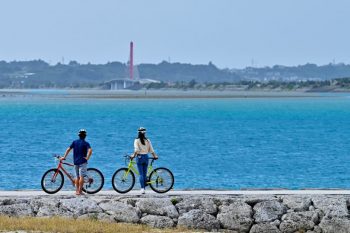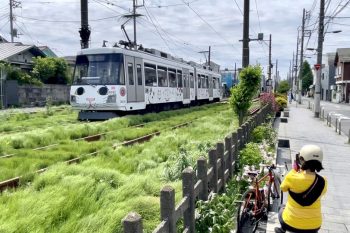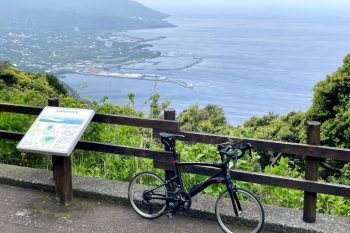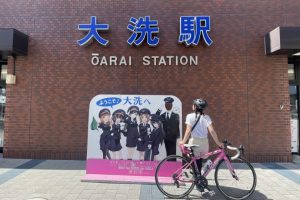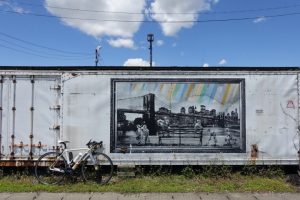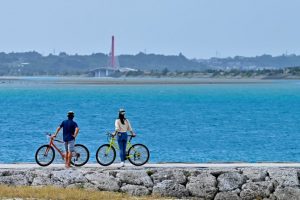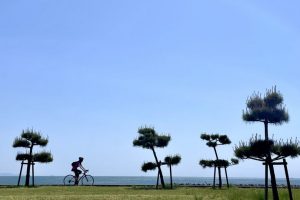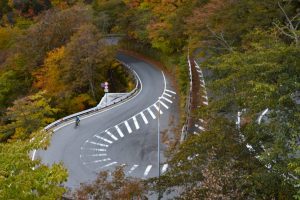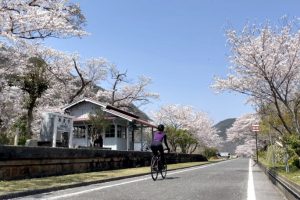Wakayama is famous for Kumanoko-do, Shirahama beach, and pandas at Adventure World, but there are also many historical sites and scenic spots in Wakayama city and Kainan city on the west coast, which you can reach by one-day cycling from Osaka.
Here is a report on my 25km (165m elevation gain) ride from JR Wakayama station to JR Kainan station. (From Osaka to Wakayama, I took JR Kishu-ji rapid service bringing my own bike.)
Contents
- Start from JR Wakayama Station
- Climbing Wakayama Castle
- Ramen with “tenkasu” and “Haya-shushi”, Wakayama specialties, for lunch
- Encountering the spectacular view of Wakayama at Saikazaki
- Another Historic Sites: Kishu Toshogu Shrine, Furo Bridge
- To a European Town Lit Up by the Setting Sun Wakayama Marina City
- Summary
Start from JR Wakayama Station
The JR Kishu-ji rapid train is a convenient way to get to the west coast side of Wakayama from Osaka; it takes about 1 hour and 40 minutes directly from JR Kyobashi station.
There is also a bicycle rental service called “Wakachika Bicycle Rental” at the tourist information center in the basement of the station, right after getting off at JR Wakayama station. This time I brought my own bicycle because I was going south to Kainan city, but if you just want to go sightseeing in the city around Wakayama Castle, renting a bicycle is a good idea. In addition to city bikes, there are also cross bikes available for rent for 600 yen per day.
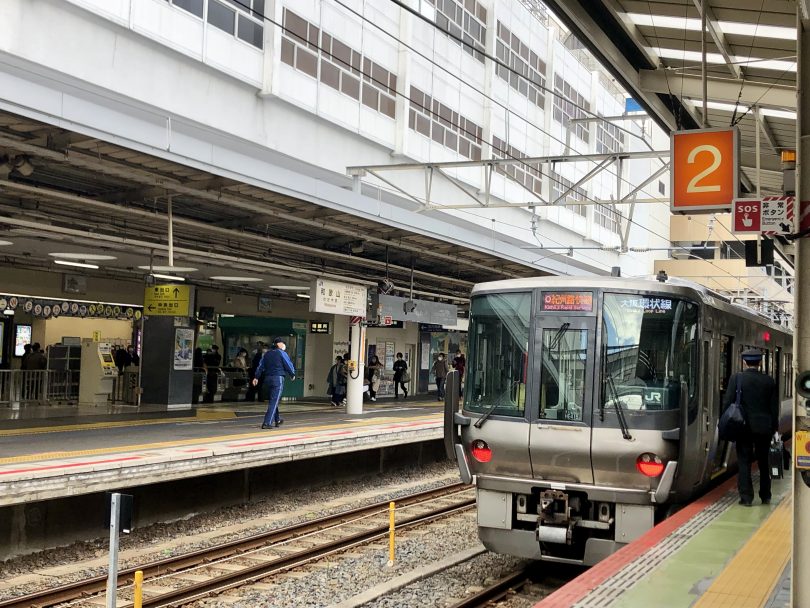
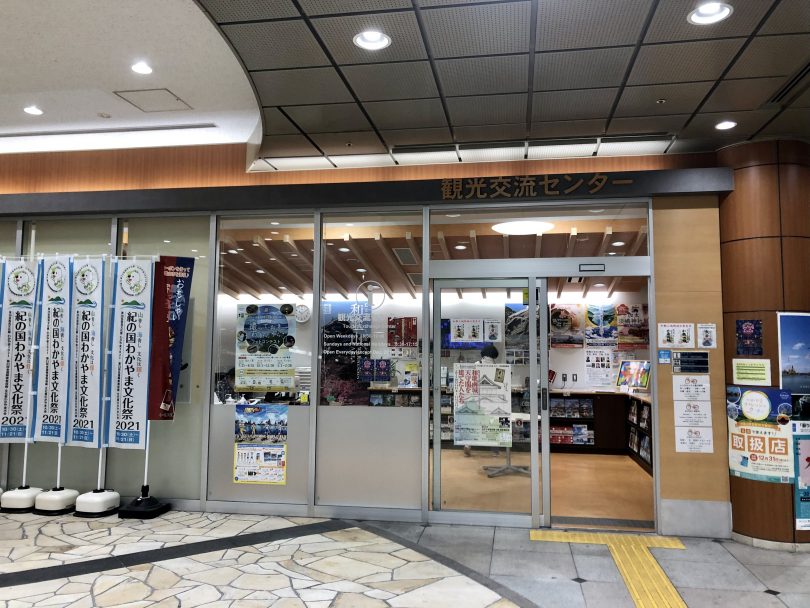
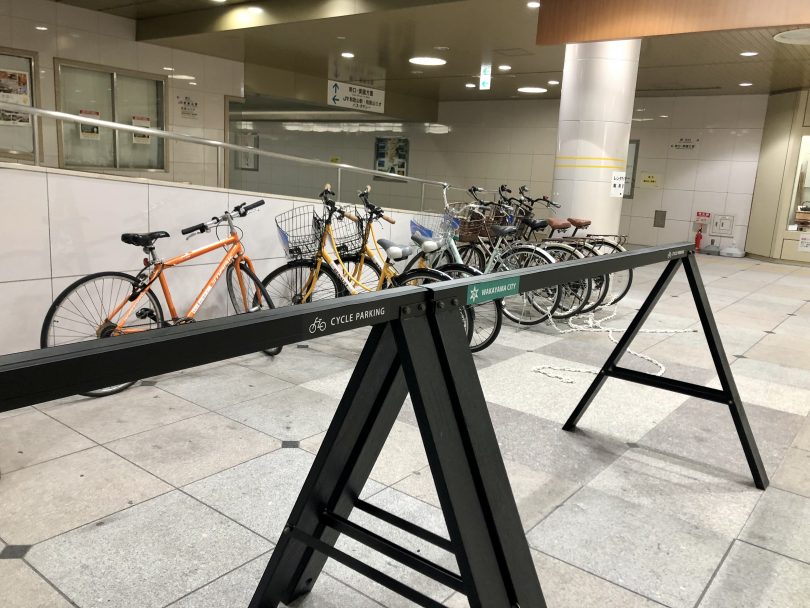
Climbing Wakayama Castle
From Wakayama station, ride along Keyaki main street to Wakayama Castle, about 2.2 km away.
Wakayama Castle was built in 1585 by Hideyoshi Hashiba (Toyotomi), who ordered his younger brother Hidenaga to build it on the peak of Okayama (Torabushiyama) after he had pacified Kishu area. After that, it was maintained by Kuwayama, Asano, and Kishu Tokugawa families. The castle tower, which can be seen from the moat, still looks like it is watching over the city from on high, and you will be charmed by its graceful appearance.
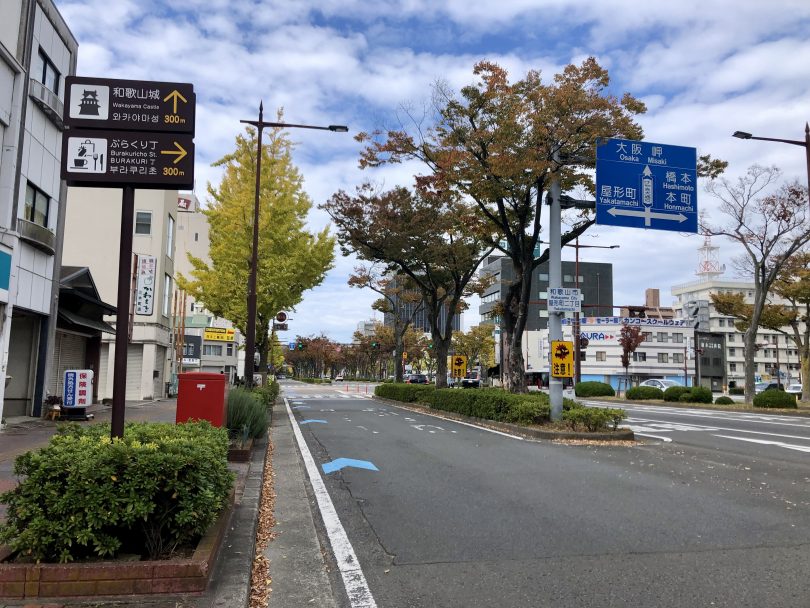
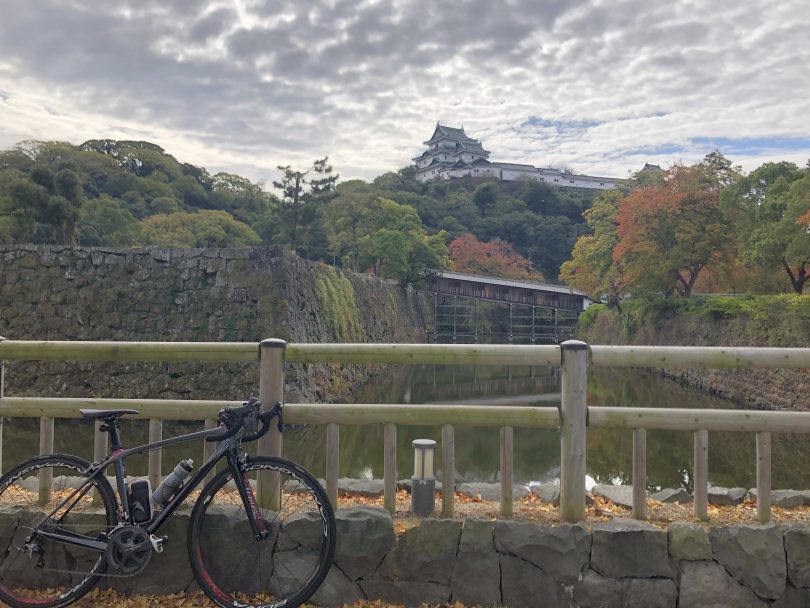
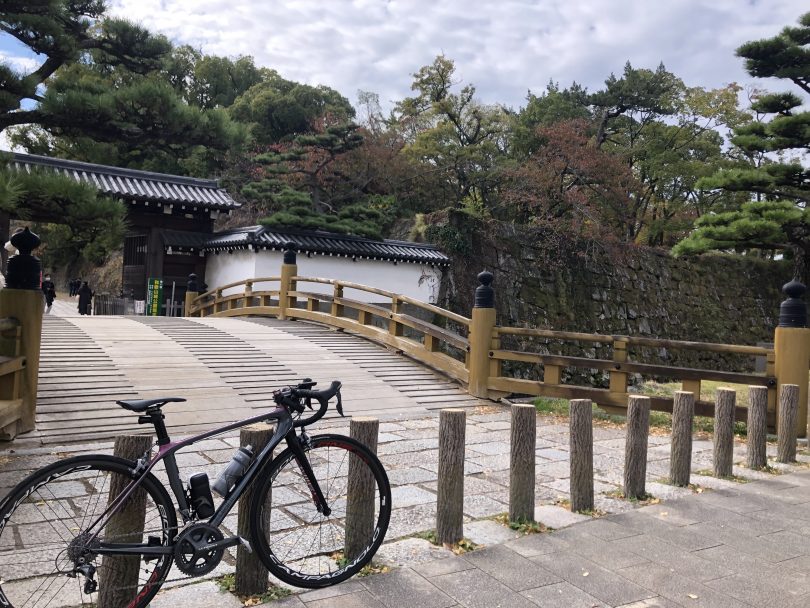
I parked my bike at the bicycle parking lot near Wakayama Museum of History along the moat, and entered the castle from Momijikei garden.
One of the most impressive features of the castle is the “Onhashi-rouka” (bridge corridor) that runs diagonally across the moat. This corridor was used by the lord, his attendants, and the maidservants to go back and forth between Ninomaru and Nishinomaru.
It was built like a room with walls and a roof so that it could not be seen from the outside, but it was also built at an angle, making it a mysterious space. It is said to be one of the rare corridor bridges in Japan.
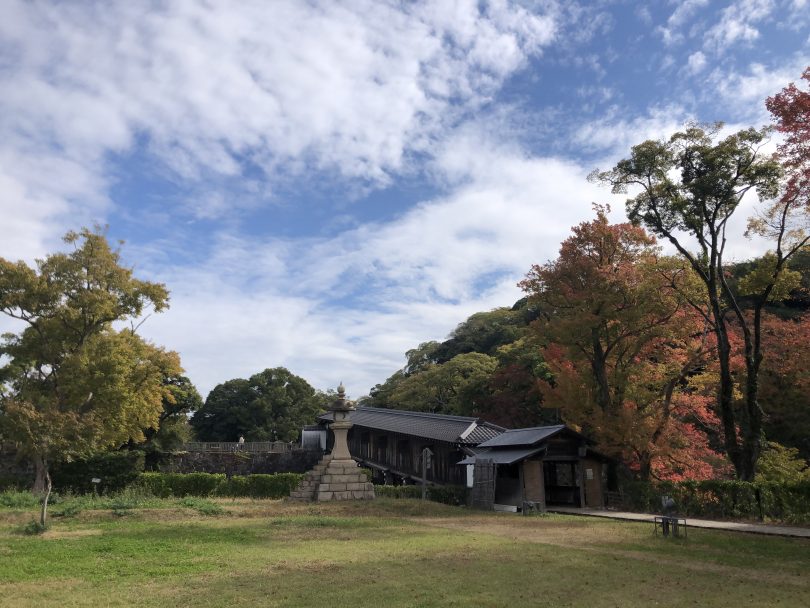
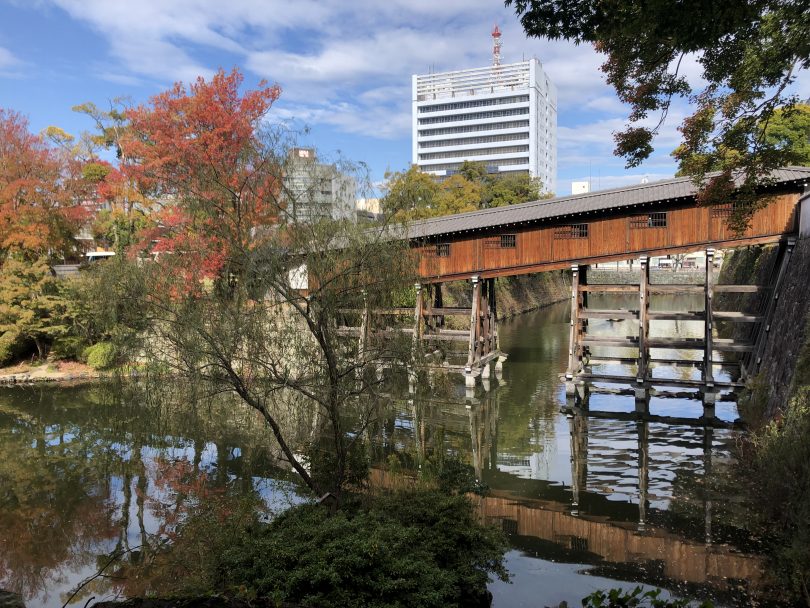
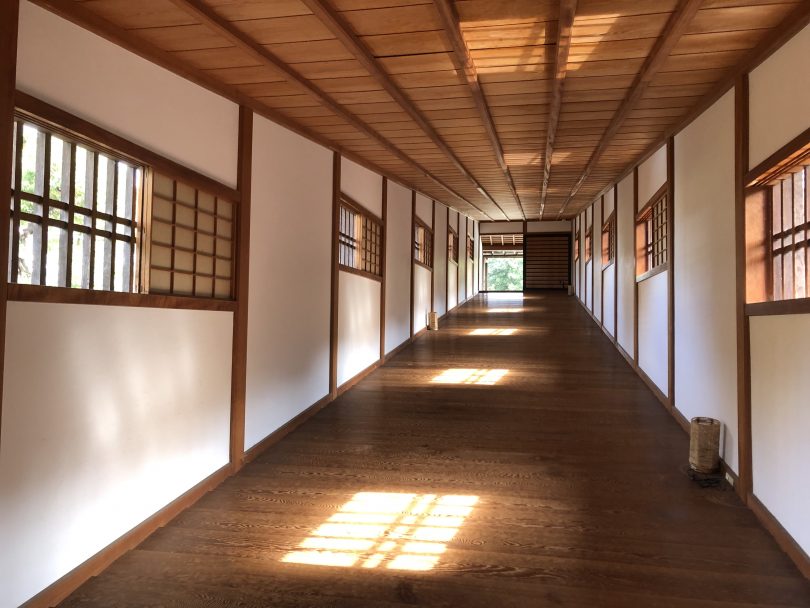
Climbing up the long, long stone stairs that seem to be much harder on your legs than riding a bicycle, but you can finally reach the castle tower.
From the third floor of the wooden structure, you can enjoy the unique view of the mountains and the sparkling sea that only Wakayama can offer.
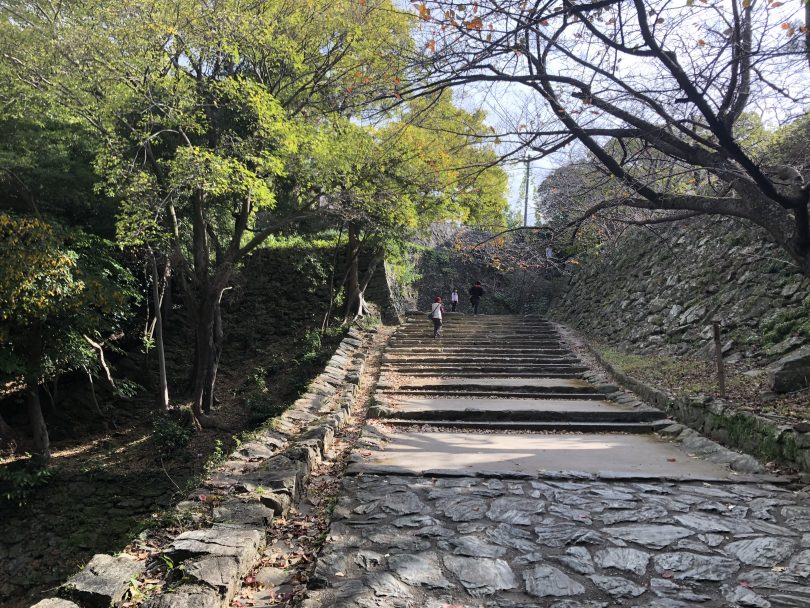
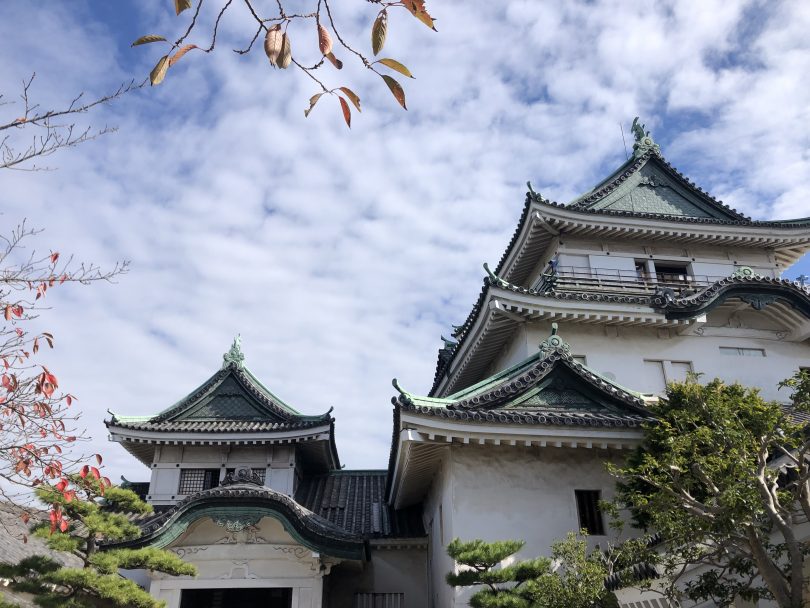
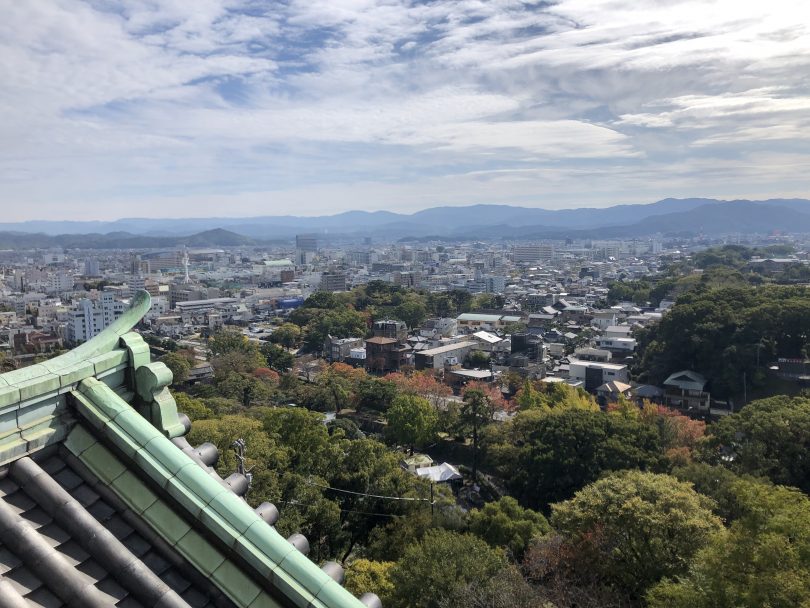
If you have time, you may want to stop by Wakayama Prefectural Art Museum and Wakayama Prefectural Museum, which are located on the south side of the castle across Sannenzaka street.
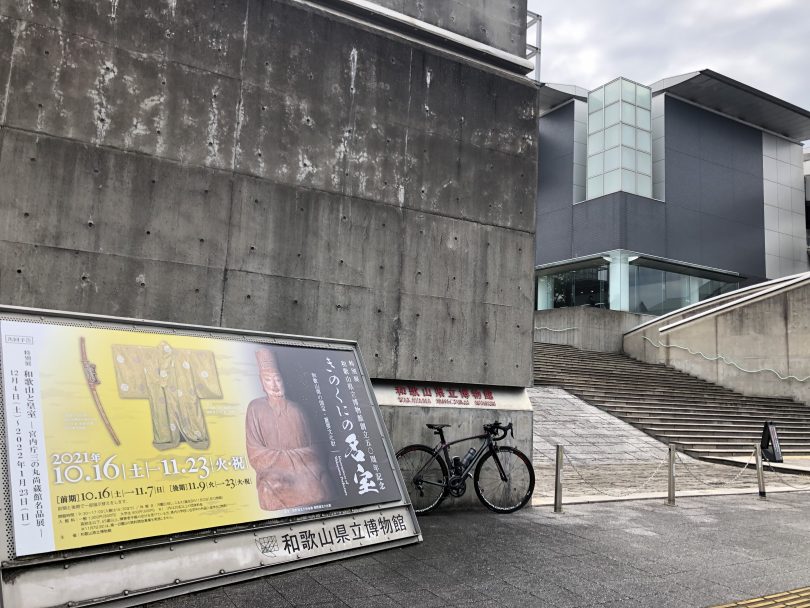
Ramen with “tenkasu” and “Haya-shushi”, Wakayama specialties, for lunch
When you get hungry after walking around the castle, ride about 1.3 km along Sannenzaka street toward Wakayama port to Gyokurin-en Green Corner Tsukijibashi branch for Wakayama ramen.
As I entered the store, I suddenly saw a freezer of “Green soft”, a green tea soft-serve ice cream at the entrance.
Why at a ramen store? In fact, Green Corner is a ramen store owned by Gyokurin-en, a long-established tea store established in 1854.
That’s why it’s called “Green” because it’s a tea shop. Green Corner is also located in a shopping mall in Wakayama city, and has been loved by the people of Wakayama prefecture for over 60 years.
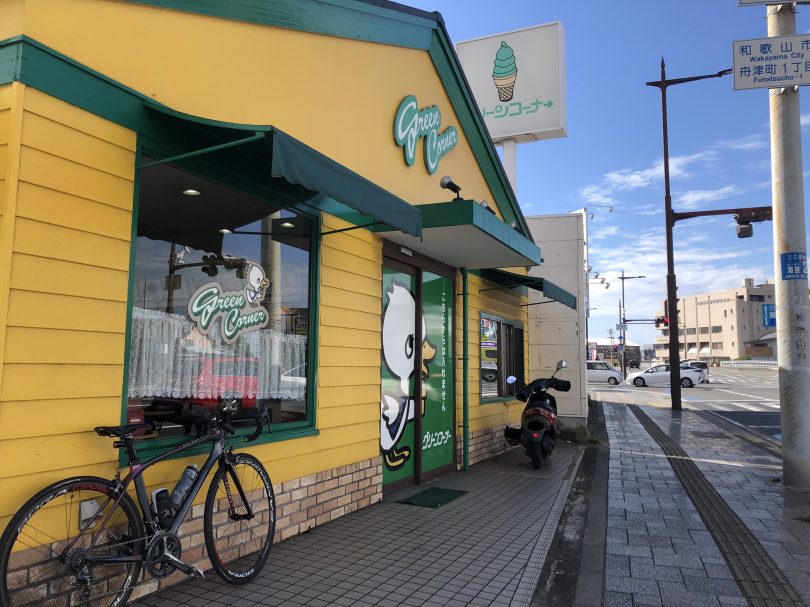
On this day, I had the famous “Tenkake Ramen” with tenkasu (crunchy bits of deep-fried dough produced as a byproduct of cooking tempura) and “Haya-sushi”, bite-sized pressed sushi. It is said that in Wakayama, the refreshing pressed sushi goes well with soy sauce ramen, and is a popular combination at ramen stores. Of course, fried rice is also a good accompaniment to ramen, but sushi rice is a good choice without making your stomach too heavy…!
The main dish of ramen was a clear soy sauce soup with a mild and simple taste. I guess because of its simpleness, it never gets old and has been loved by locals for many years.
For dessert, I had a green soft-serve ice cream. It is made from high-quality Japanese matcha green tea, but has a light and refreshing taste that is perfect as a palate cleanser after the soy sauce soup. It was like eating gelato as a dessert after Italian dishes with lots of olive oil. It was a new dining discovery for me.
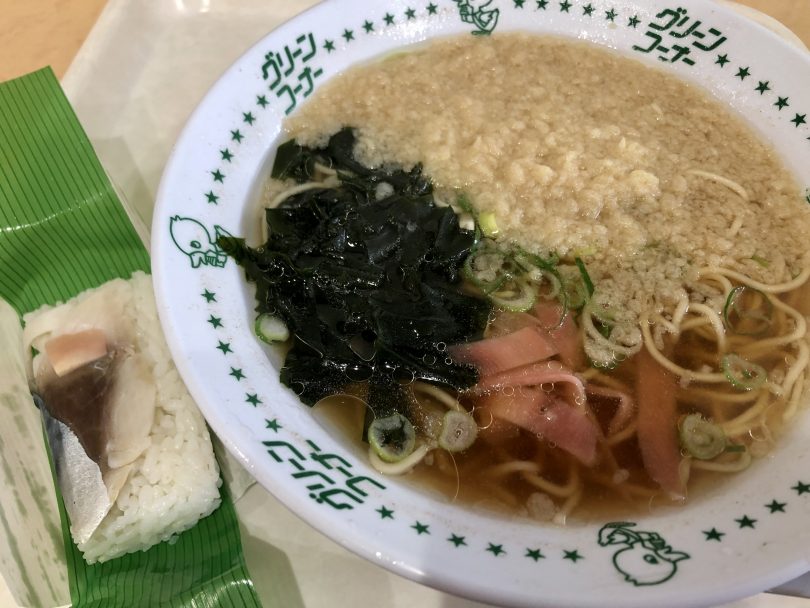
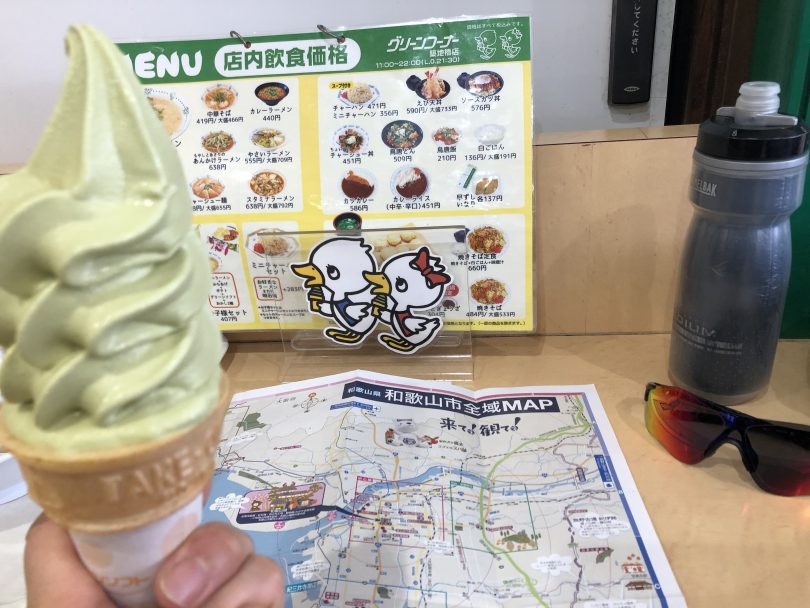
Encountering the spectacular view of Wakayama at Saikazaki
From Tsukiji bridge area, where Green Corner is located, continue along Route 15 toward Wakanoura area.
Wakanoura is recognized as a Japan Heritage Site as “a treasure house of spectacular views, Wakanoura” and is an area filled with shallow beaches, Japanese gardens, temples and shrines, and other historical sites.
First, I headed for Saikazaki, about 5.6 km from Tsukiji bridge. As you get closer to the coastline, there are more ups and downs, and it is a good post-meal exercise for your stomach after enjoying sushi, ramen, and a soft-serve ice cream.
Saikazaki is a special area designated as a Setouchi Sea National Park, and is also called the “Amalfi of Japan” because of the houses that line the hills around Saikazaki fishing port.
There are many places to see, but the one I stopped by on the day was Bandoko garden. It is also called the nose of Bandoko(guardhouse) because of its cape shape. You can enjoy the scenic view of fishing boats passing by from the hill.
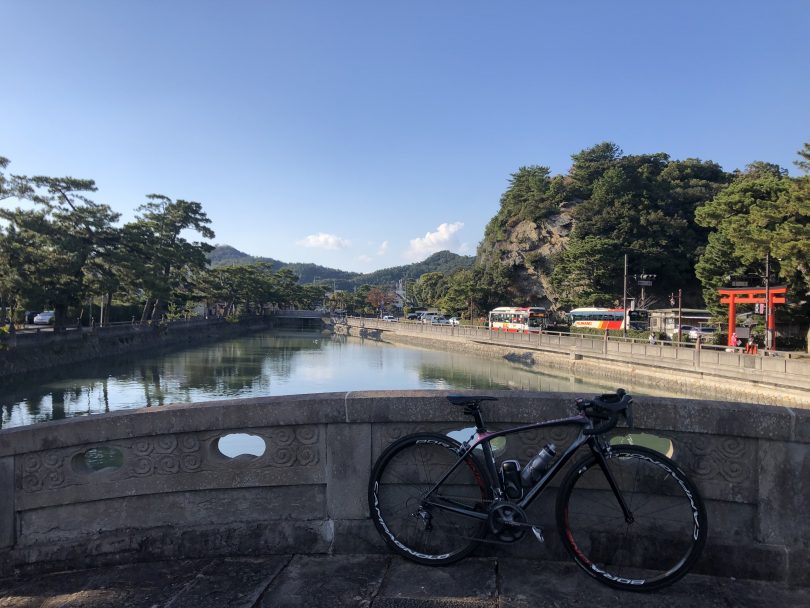
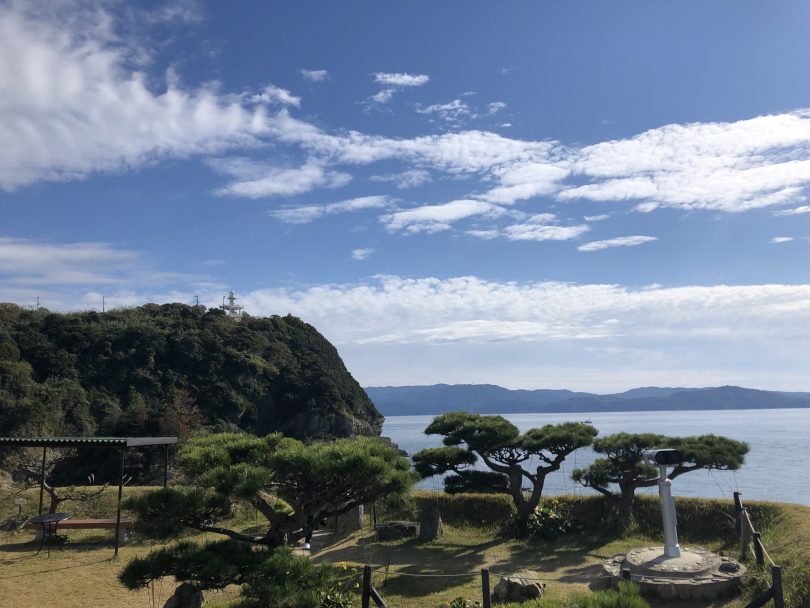
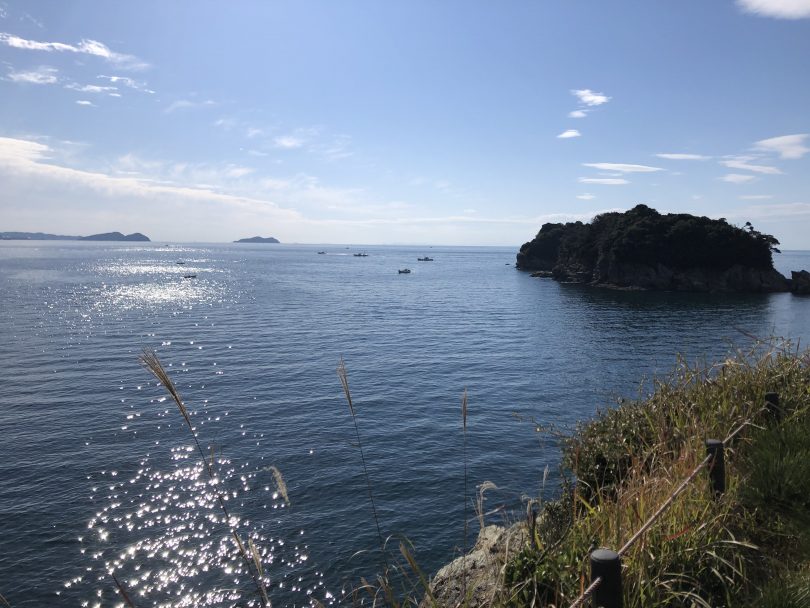
If you are confident in your legs, you can climb the steep slope just outside Bandoko garden and stop by Saikazaki lighthouse. This is a spot where you can see the horizon and feel the roundness of the earth.
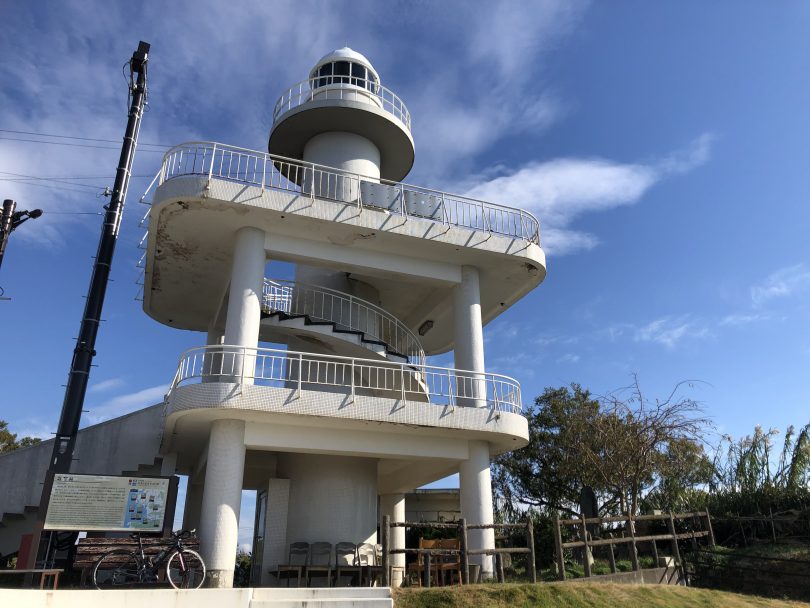
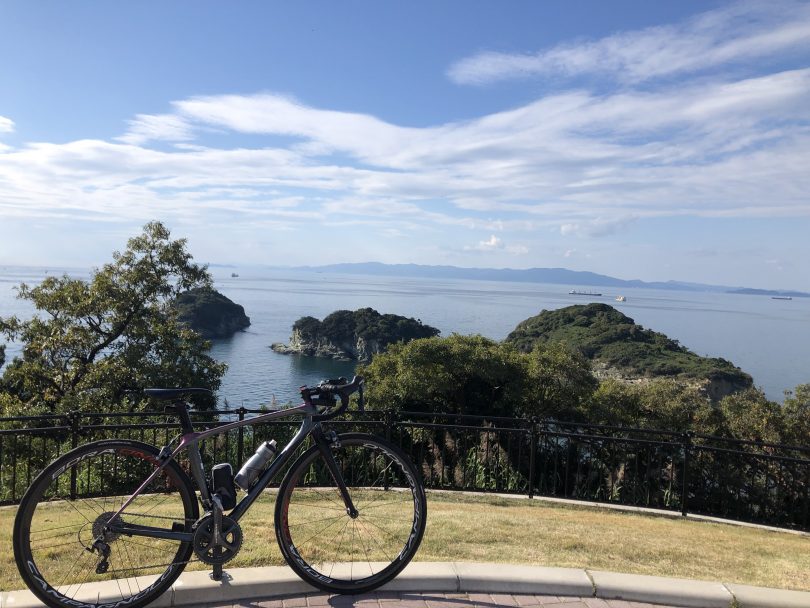
Another Historic Sites: Kishu Toshogu Shrine, Furo Bridge
From Saikazaki, follow Wakayama Cycling Road, which is marked with blue triangular arrows on the roadway, to Wakaura Port. Even at a fork, the road is marked in advance as “40m ahead→” (right arrow indicating a right turn), so you can keep pedaling without stopping to check the map app on your phone every time.
Like Saikazaki, Wakaura area is also home to many historic temples and shrines such as Tamatsushima Shrine and Wakaura Temmangu Shrine. On this day, I paid a visit to Kishu Toshogu Shrine, also known as the “Nikko of Kansai”, and stopped by Furo Bridge, a rare arched stone bridge from the Edo period. Incidentally, the stone steps of Wakayama Castle are quite impressive, but Kishu Toshogu Shrine also has a shrine building on top of steep stone steps.
If you want to ride this course mainly for sightseeing, I recommend you to wear sneakers or binding shoes of the SPD type for MTB.
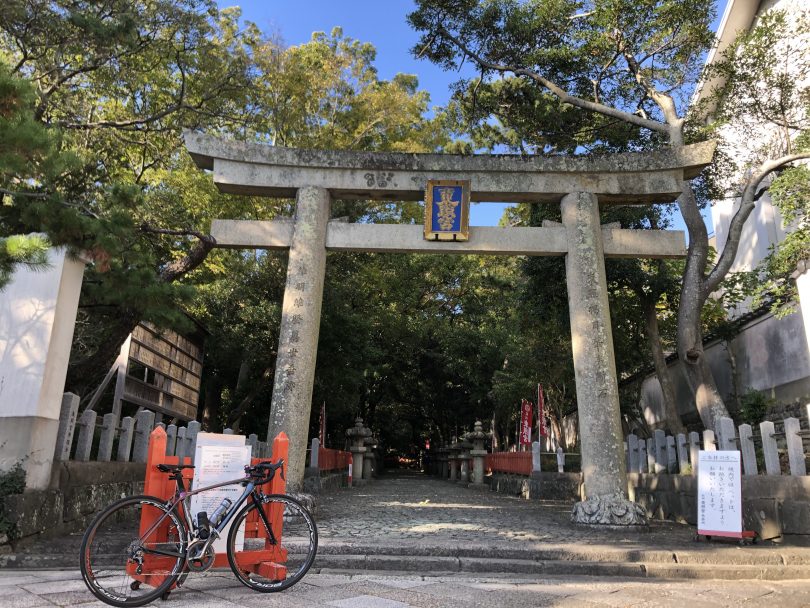
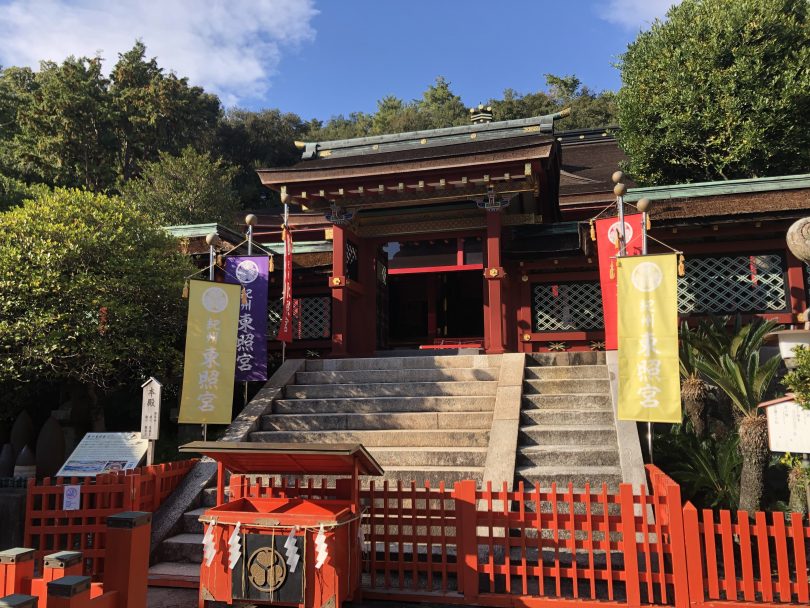

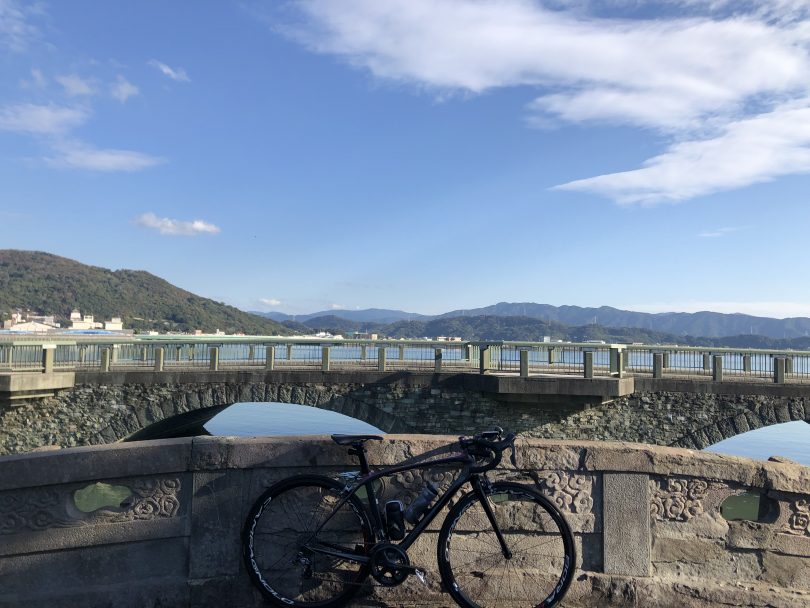
For your information, the stone steps of Wakayama Castle are quite impressive, but Kishu Toshogu Shrine also has a shrine building on top of steep stone steps.
If you want to ride this course mainly for sightseeing, I recommend you to wear sneakers or binding shoes of the SPD type for MTB.
To a European Town Lit Up by the Setting Sun Wakayama Marina City
From Furo Bridge, you will follow the cycling road again to Wakayama Marina City, about 5 km away.
The route is part of Pacific Rim Bicycle Path and is easy to ride.
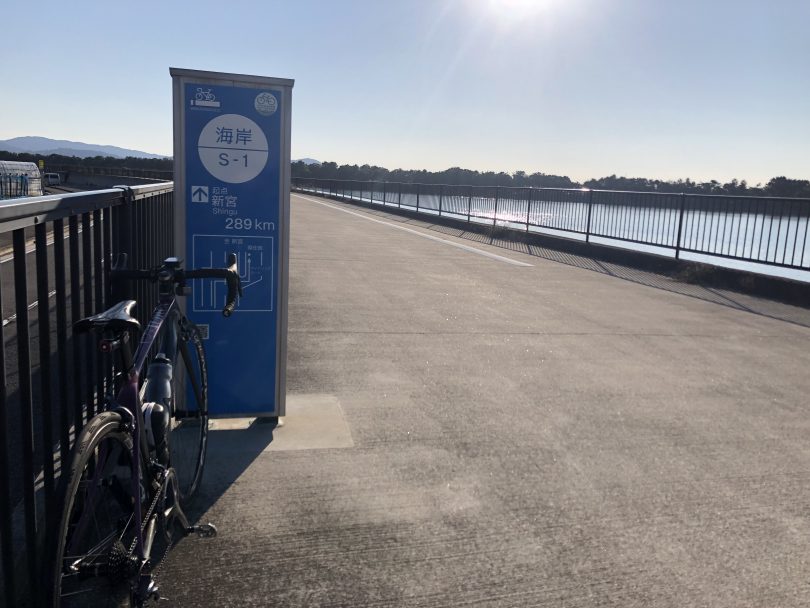
The view of Sun Bridge from Hamanomiya Beach and the colorful buildings of Marina City beyond is like a foreign resort.
It was an impressive change from the purely Japanese style of the historic sites I had just visited.
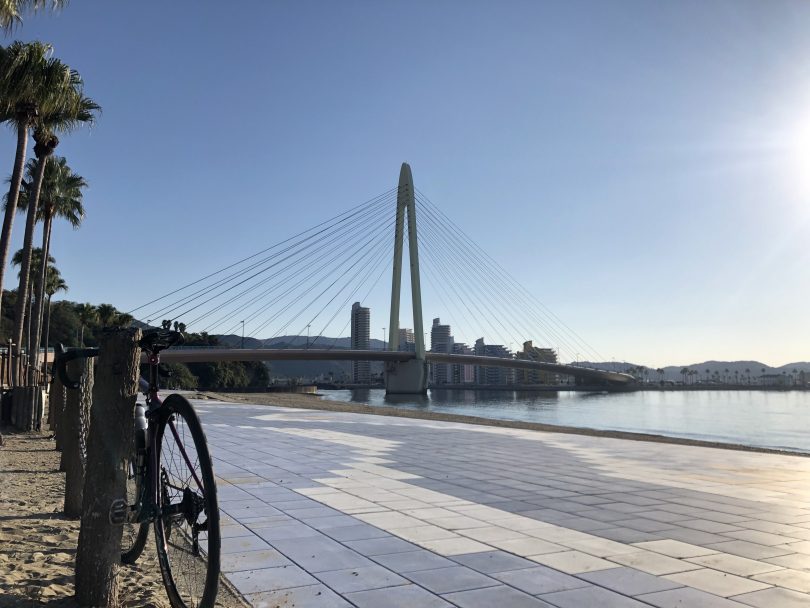
As I crossed Sun Bridge in the afternoon sun, the view of the marina lined with cruisers and yachts spread out before me.
It reminded me of the scenery I used to see while riding along Gold Coast on the east coast of Australia, where I used to study abroad.
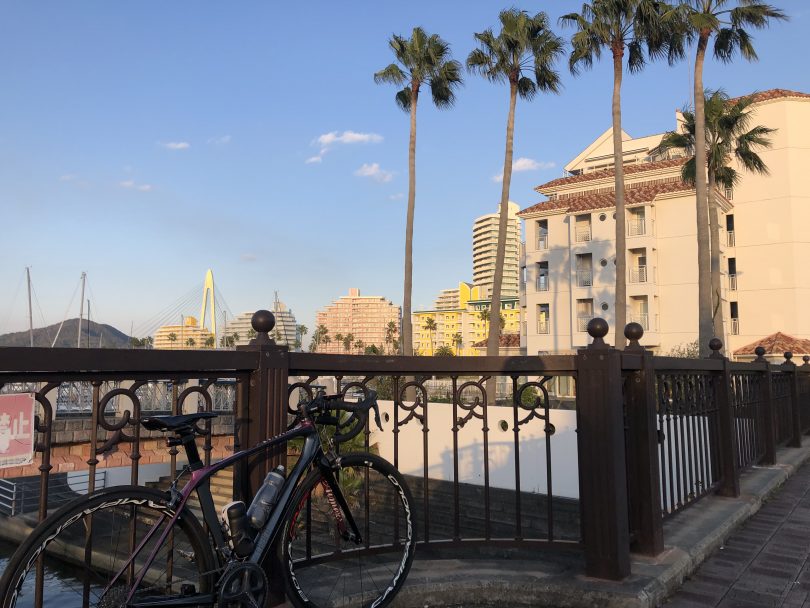
Wakayama Marina City, a resort complex, has an area called Porto Europe that recreates a European cityscape.
There is a fee for roller coasters and other attractions, but admission to the area itself is free. There are many photo-worthy spots.
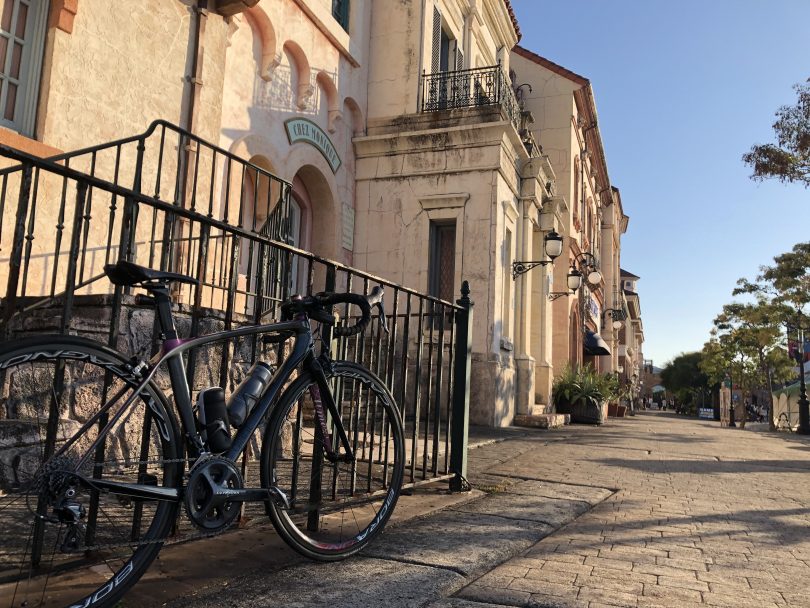

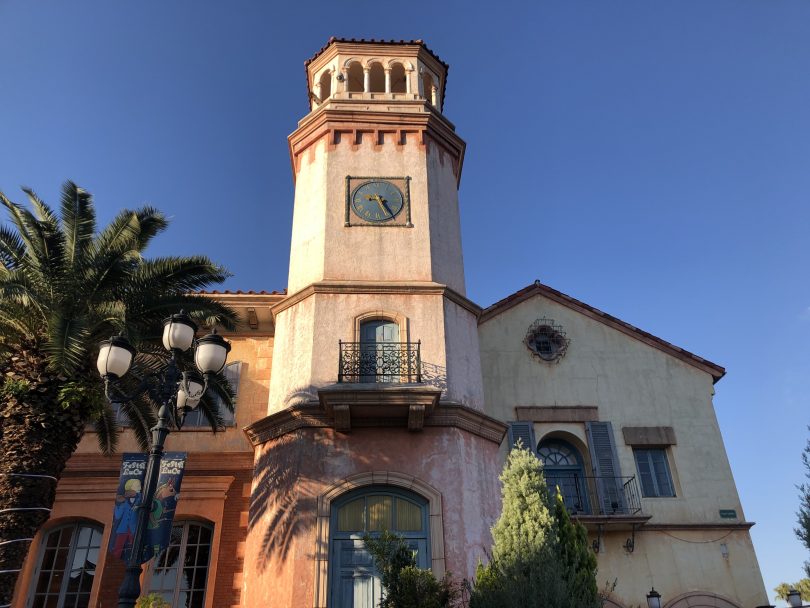
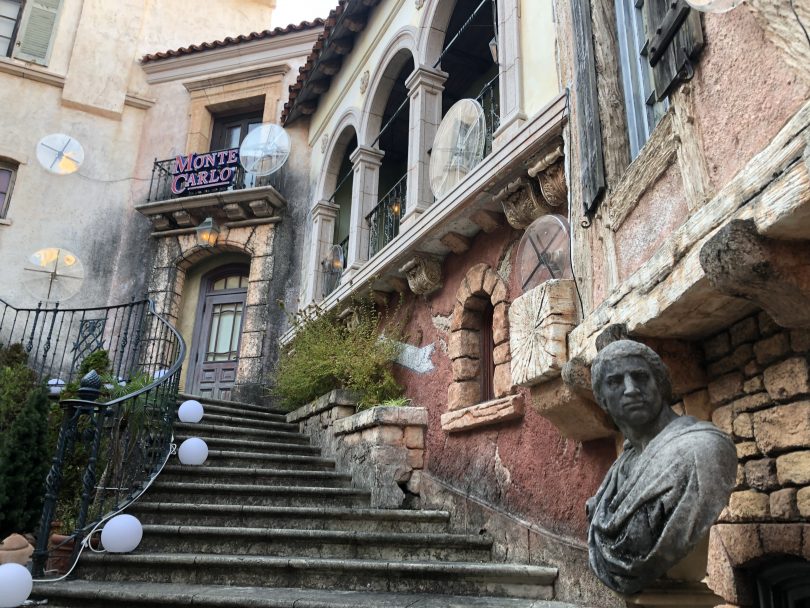
Right next to Porto Europa is Kuroshio Market, which is a shopping street inspired by the Showa 30s (around 1955). It is a good spot to park your bike on the bike rack and take a break at a café or buy some souvenirs.
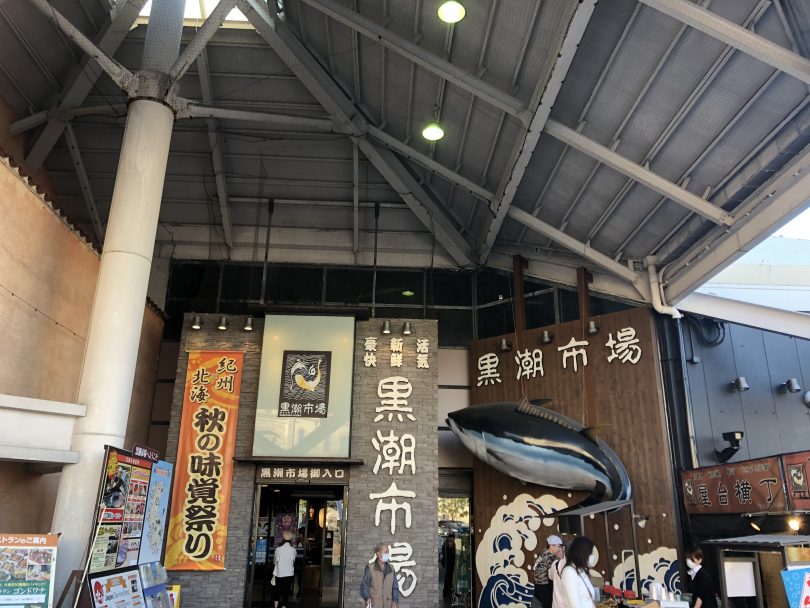
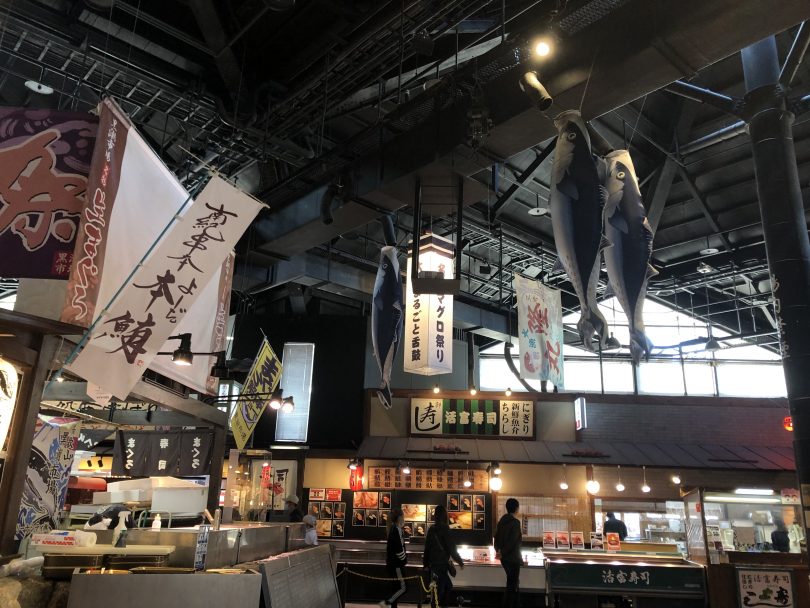
I left Wakayama Marina City, crossed Moon Bridge on the opposite side of Sun Bridge, and reached the goal at JR Kainan station, about 5 km away.
I took JR Kinokuni Line to Wakayama station, and changed to a Kishu-ji Rapid train at Wakayama station, and got back to Osaka.
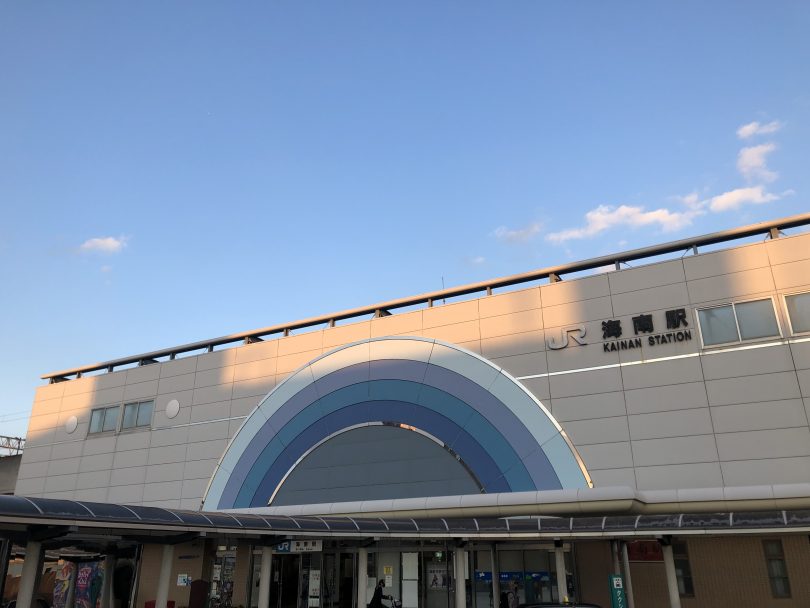
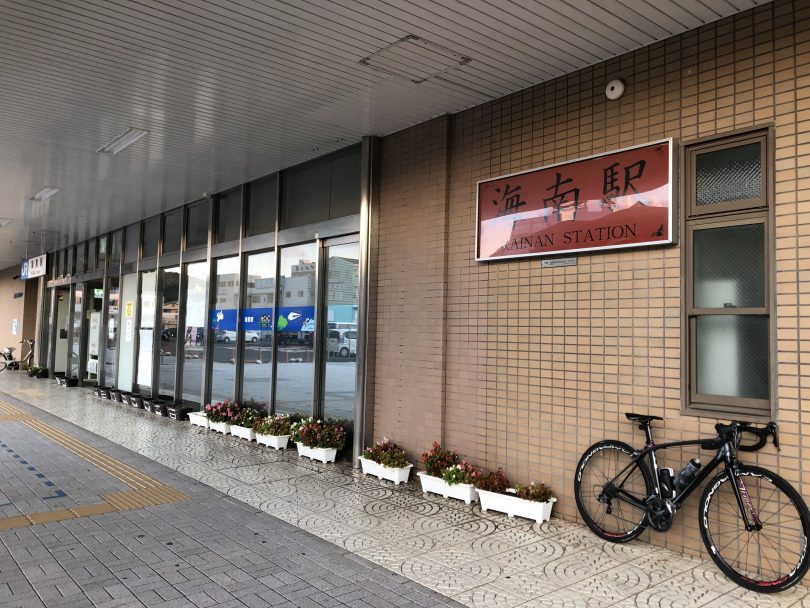
Summary
This time, the distance was only about 25km, which is not a long distance for a full day ride, but the trip was filled with castles, Japanese traditional style gardens, shrines, local delicacies, spectacular views of the sea, a European cityscape, markets….It turned out to be a more satisfying ride than I had expected, even though I had planned it myself.
Wakayama can be enjoyed by history lovers, geography lovers, and gourmet lovers alike. Why don’t you bring your bike, get on the train and go for a ride to Wakayama?



